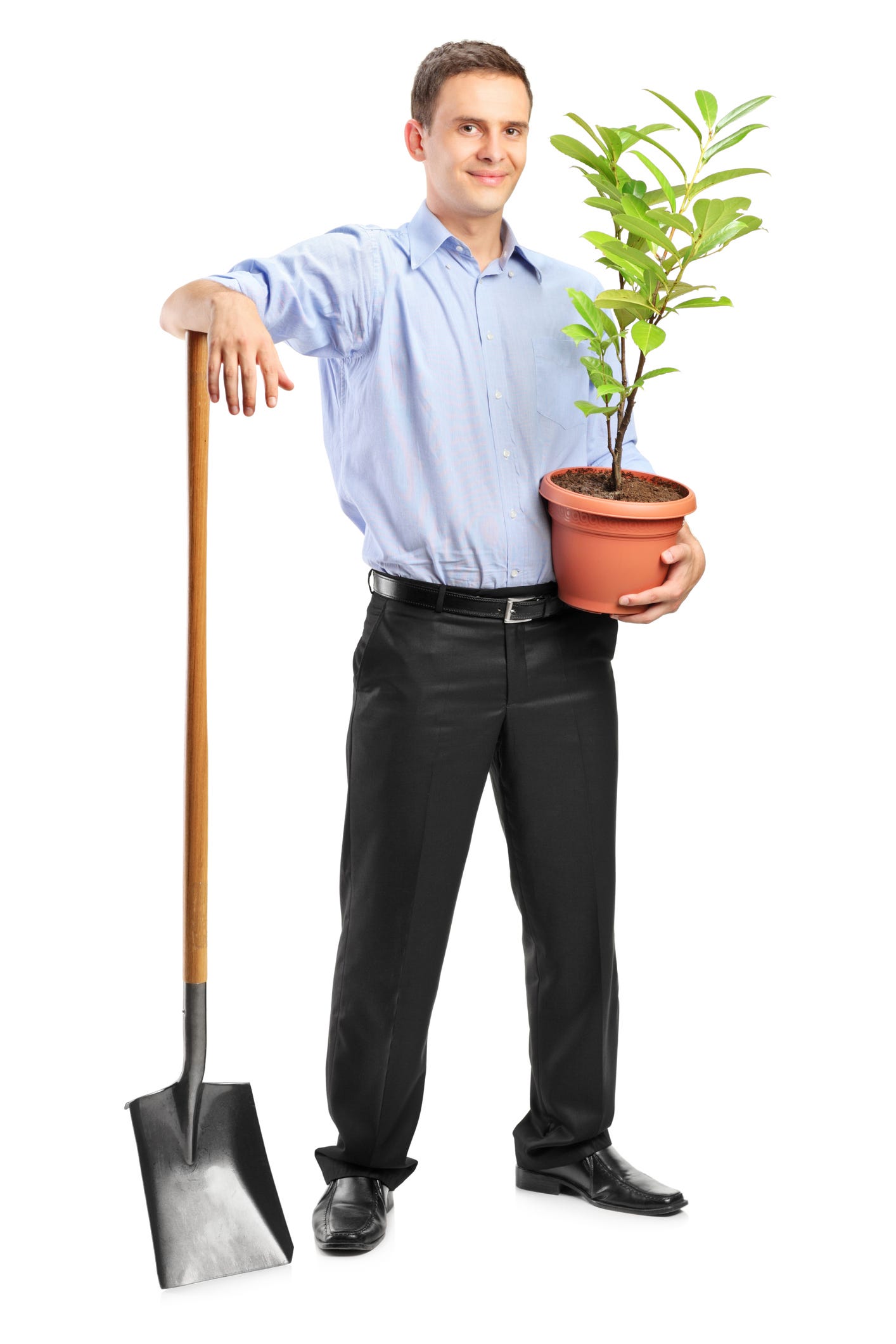How to Plant and Transplant
Planting and Transplanting Fundamentals
Two of the most important things to remember when planting and transplanting is saturating the roots with water right before and after you put the plant in it's new home; and making sure your plant isn't root bound, and that it's roots are fanning out freely so it can take root easily in the new soil.
When it comes to trees and shrubs, planting high and mounding up is foundational for long term health, disease resistance, and respiration. So many times when a tree or shrub starts showing signs of ill health, it is because it was planted too low in the ground, was planted root bound, planted in the wrong soil and sun/shade environment, and cannot breathe properly.
Tiny starts, small plants, and creeping ground covers - like creeping thyme, blue star creeper, and sweet woodruff - don't need to be planted above ground level. These plants should be planted at ground level.
Right Soil - Right Plants - Right Environment
It is important that you plant with the right soils and put the plants in the right environment. Blueberries, Rhododendrons, Holly, Daphne, and Azaleas all like acid soil. Blueberries and Holly prefer full sun, whereas the Daphne, Rhododendron, and Azalea will need to be under the canopy and out of full sun, depending on the variety.
Most plants have many different varieties, and you will need to match the variety you have to the optimal soil conditions, sunlight, shade, temperature/climate, etc. This is critical for the long term health, happiness, and beauty of the plant you are working with.
Step-By-Step Breakdown - How to Plant and Transplant
Prepare the planting hole that the plant is going into. I always dig the hole out first, and then fill it with the appropriate amount of soil amendment specific to that plant. Turning it over until it's well mixed and ready to plant.
Saturate the roots of the plant. Soak the roots in a bucket of water or spray them off thoroughly until saturated.
Place the plant in the prepared hole and bury the roots, pressing the roots into the soil firmly. Remember if it's a tree/shrub to mound up above the surface of the soil. If it's a small ground growing plant, then plant level to the surface of the soil
Water in thoroughly, and make sure to water it well for the next 2 weeks. When planting in the spring/summer, having a drip system to go onnit after you've planted is important if you don't want to water yourself.
Make sure the drainage is good when you water it in. If it isn't, take the plant out right away, and keep the roots moist until you have this dialed in.
Don't forget that fall (September - October - November) are the best months to do your planting and transplanting projects because the weather tends to be ideal for it depending on where you live. And once again… the reason to do your planting and transplanting projects in the fall is because we generally have 6 months of cooler/wetter weather before we get blasted with the hot/dry summer weather.
Straight Up & Free with James D is a reader supported publication.
If you found this valuable and educational, and appreciate the craftsmanship and care I bring in providing this content, please consider upgrading your subscription to support my work. You can also give a gift subscription, or make a one time donation.
Thank you!


